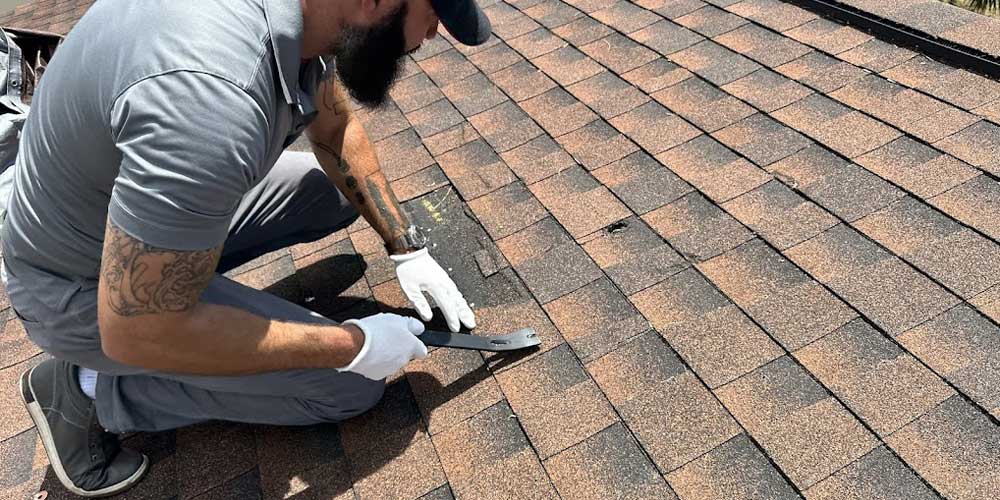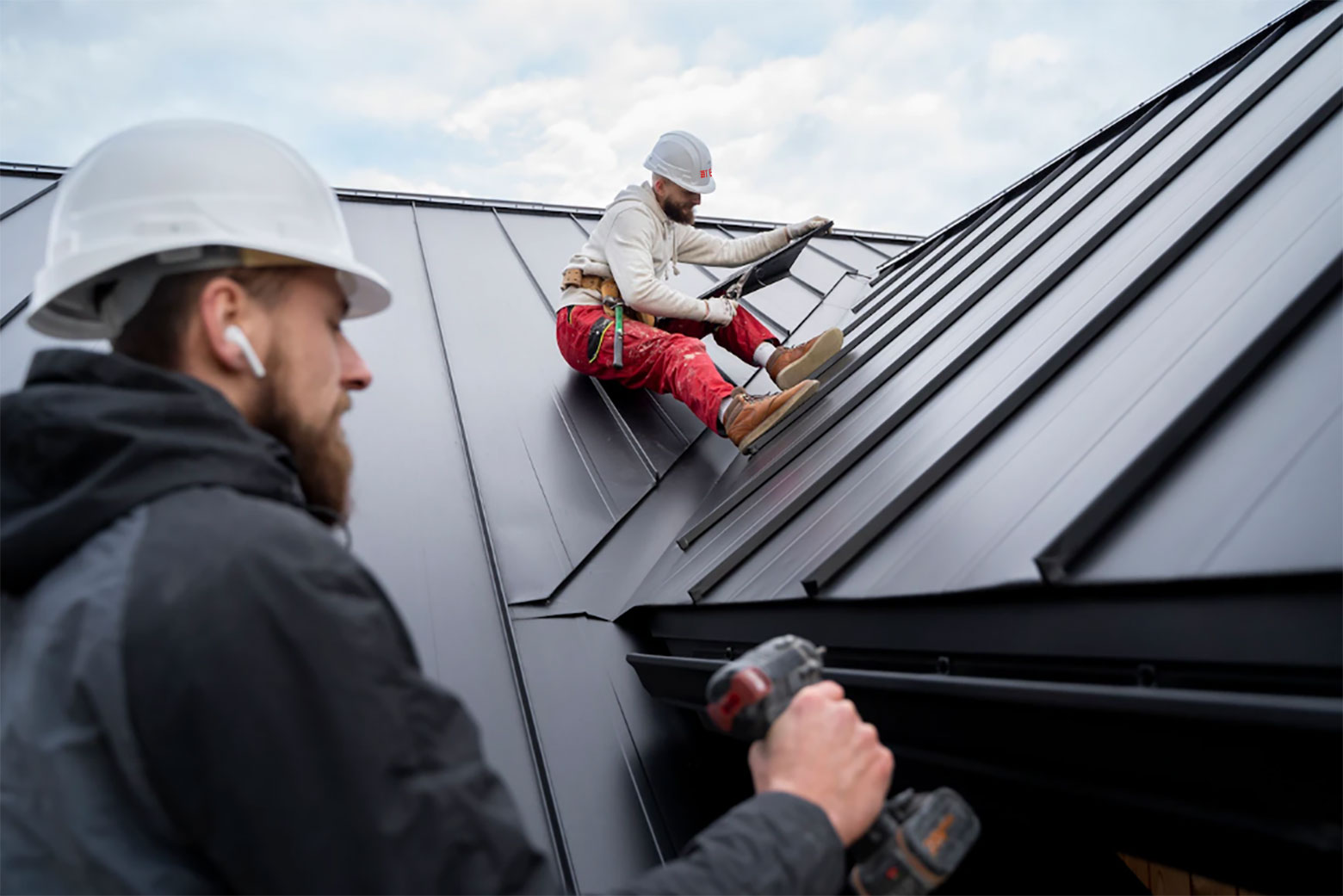Roofing Oahu: High Quality Providers for Resilient Roofs in Oahu
Roofing Oahu: High Quality Providers for Resilient Roofs in Oahu
Blog Article
Understanding the Different Types of Roofings: A Comprehensive Overview for Homeowners
With a range of alternatives-- varying from the conventional gable to the contemporary level-- each type presents one-of-a-kind benefits and challenges that need to line up with the property owner's particular demands and ecological considerations. As we check out the complexities of various roofing types, it comes to be apparent that one dimension does not fit all; the best selection may surprise you.
Saddleback Roof
Saddleback roofs, characterized by their triangular form, are amongst the most preferred roofing designs due to their simpleness and effectiveness in dropping water and snow. This layout features 2 sloping sides that meet at a ridge, enabling efficient drain and decreasing the danger of water buildup. The steep pitch frequently connected with saddleback roofs boosts their ability to manage heavy precipitation, making them appropriate for numerous climates.
In enhancement to their practical benefits, gable roof coverings use aesthetic convenience. They can be adapted to different building styles, from conventional to modern-day homes. The design can likewise accommodate additional features such as dormer home windows, which boost natural light and air flow in the attic room space.
In addition, gable roofings give adequate room for insulation, contributing to power efficiency. House owners can select from a range of roofing products, consisting of asphalt roof shingles, metal, and floor tiles, additionally improving modification alternatives.
Regardless of their benefits, gable roofs may require additional support in areas prone to high winds or heavy snowfall. Overall, the saddleback roof stays a preferred choice because of its blend of functionality, toughness, and aesthetic charm.
Apartment Roofs
Flat roofing systems are typically acknowledged for their minimalist design and practical applications, specifically in business and commercial settings (oahu roofing). These roofs feature a nearly straight or straight surface, which permits very easy building and construction and flexible area utilization. While they might lack the aesthetic allure of angled roofs, level roofing systems offer countless benefits, especially in city environments where optimizing room is vital
Among the main benefits of flat roofings is their ease of access. Property owners can utilize the roofing system room for different purposes, such as roof gardens, balconies, or solar panel setups. Additionally, level roofs are commonly much more affordable to install and preserve contrasted to their sloped counterparts, as they call for fewer materials and labor.
However, flat roof coverings do present specific obstacles. Appropriate water drainage is vital to protect against water pooling, which can cause leakages and structural damage. For this reason, choosing premium waterproofing products and regular evaluations are essential for guaranteeing durability. Usual products used for flat roofings consist of built-up roof covering (BUR), modified bitumen, and single-ply membranes, each offering unique advantages. On the whole, flat roofing systems act as a useful and versatile choice for numerous house owners and businesses alike.
Hip Roofing Systems
Hip roofings are defined by their sloped sides that assemble at the top, forming a ridge. This design stands out from saddleback roofs, as all four sides of a hip roof covering incline downwards towards the wall surfaces, offering a much more secure framework. The angle of the slopes can differ, enabling adaptability in architectural aesthetic appeals and performance.
One of the primary benefits of hip roof coverings is their capability to endure heavy winds and damaging climate condition. The sloped surfaces make it possible for far better water drainage, reducing the threat of leakages and water damage. In addition, hip roofings provide increased attic room space, which can be made use of for storage and even exchanged comfortable areas.
However, creating weblink a hip roofing system can be more expensive and complex than less complex roofing system kinds, such as gable roofings. The additional product and labor involved in producing the slopes and making sure proper architectural integrity can bring about higher costs. Despite these disadvantages, many homeowners favor hip roofings for their resilience, aesthetic appeal, and potential for energy effectiveness.
Mansard Roofings
Mansard roofings, commonly recognized by their unique four-sided design, feature two inclines on each side, with the reduced incline being steeper than the upper. This building design, stemming from France in the 17th century, is not only cosmetically enticing but practical, as it optimizes the useful space in the upper floorings of a structure. The high lower slope permits even look here more clearance, making it a perfect option for attic rooms or loft spaces, which can be exchanged living areas.
Mansard roof coverings are characterized by their flexibility, fitting numerous building designs, from traditional to contemporary. They can be built with various products, consisting of asphalt shingles, slate, or metal, offering house owners with an array of alternatives to suit their budget plans and choices. In addition, the layout enables the assimilation of dormer home windows, enhancing natural light and air flow in the top degrees.
However, it is vital to think about the possible downsides. Mansard roof coverings may require more maintenance due to the intricacy of their style, and their high inclines can be challenging for snow and rain overflow. On the whole, mansard roofings combine elegance with functionality, making them a popular choice amongst property owners seeking distinct architectural functions.
Dropped Roof Coverings
As house owners increasingly look for simplicity and functionality in their building styles, shed roofs have actually become a prominent choice. Identified by a single sloping plane, a shed roof covering provides a minimal aesthetic that complements numerous home styles, from modern to rustic.
One of the main benefits of a shed roofing system is its uncomplicated building, which often equates to decrease labor and material expenses. This layout allows for effective water drain, reducing the danger of leakages and water damages. Additionally, the vertical incline provides adequate room for skylights, improving all-natural light within the interior.
Shed roofings additionally provide convenience in terms of usage. They can be successfully incorporated into additions, garages, or outside frameworks like go to my site pavilions and sheds. In addition, this roof style can accommodate various roofing materials, including steel, asphalt shingles, and even eco-friendly roof coverings, aligning with green initiatives.
However, it is necessary to take into consideration local climate conditions, as hefty snow lots may necessitate modifications to the roofing's angle or structure. On the whole, lost roof coverings offer a sensible and cosmetically pleasing alternative for homeowners looking to make best use of capability without compromising design.
Verdict


Gable roofing systems, defined by their triangular form, are among the most preferred roof designs due to their simpleness and performance in shedding water and snow. oahu roofing. The high pitch generally connected with gable roofing systems boosts their ability to manage hefty precipitation, making them appropriate for different environments
While they may do not have the visual appeal of pitched roofing systems, level roof coverings offer many benefits, especially in metropolitan environments where maximizing space is vital.

Report this page